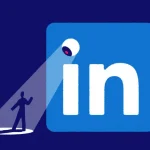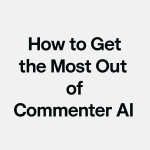Why LinkedIn Hooks Are Crucial for Your Success
Before we start, let’s be clear about one thing when we say hooks we mean the first sentences of your LinkedIn posts. When it comes to content, hooks are the most important factor for capturing attention. In a platform full of professional insights, your first sentence serves as the entry point, convincing readers to pause and read. But crafting the perfect one isn’t just about being catchy, it’s about being strategic.
In this article, we’ll get into advanced strategies for creating LinkedIn hooks that make people stop all that they are doing and read. We’ll explore practical applications, unique hook formats, and how to adapt hooks for different professional contexts.
The Science of the Scroll: Why First Lines Matter
Every day, your audience scrolls past hundreds of posts. So how do you make them stop on yours? It comes down to the science of attention.
Studies show people decide in less than 2 seconds whether to engage with content. On LinkedIn, the first line is your only chance to grab attention before the “see more” cut-off.
Hooks work because they trigger key brain responses:
– Curiosity: “I need to know what happens next.”
– Emotion: “I feel that too.”
– Pattern interruption: “Wait, that’s different.”
Without a strong first sentence, even the best content gets ignored. But with the right hook, you can turn a scroll into a click and a click into a lead.
Understanding Hook Variability: Not All LinkedIn Hooks Are Created Equal
One of the most common mistakes content creators make is using the same type of hook repeatedly. The reality is that LinkedIn audiences respond differently based on their profession, interests, and the content’s purpose. Here are a few distinct hook types to consider:
1. The Statistic Hook
People love data, especially when it challenges assumptions. For instance:
– “85% of LinkedIn users don’t know this simple trick to increase engagement.”
– “Only 1% of LinkedIn profiles are optimized correctly”
2. The Contrarian Hook
Challenge conventional wisdom to spark curiosity:
– “Posting daily won’t help you grow on LinkedIn.”
– “Networking events are overrated.”
3. The Personal Story Hook
Vulnerability and authenticity draw readers in:
– “I failed miserably on LinkedIn for 2 years.”
– “The moment I stopped chasing likes, my network exploded.”
Crafting Hooks for Different LinkedIn Content Types
Different formats call for different hooks. Let’s break down the most effective hooks based on content type:
Carousels
For visual content, use a hook that promises quick insights:
– “3 LinkedIn tips that every marketer needs to know.”
– “Stop making these 5 LinkedIn profile mistakes.”
Long-Form Posts
When writing in-depth content, use a storytelling or data-driven hook:
– “I tracked my LinkedIn engagement for 6 months”
– “How one small tweak doubled my connection requests.”
Short Status Updates
Brevity is key, so make it punchy:
– “LinkedIn hack: Stop doing this one thing.”
– “Your LinkedIn bio is costing you clients. “
Adapting Hooks to Your Professional Context
A good hook is not just about grabbing attention but also about fitting the professional context. Consider these examples:
For B2B Marketers:
– “Most B2B marketers make this LinkedIn mistake”
– “Why your LinkedIn content isn’t attracting leads.”
For Personal Brands:
– “Why I stopped posting motivational quotes on LinkedIn.”
– “Stop doing this with your personal brand on LinkedIn.”
For Job Seekers:
– “Your resume is great, but your LinkedIn profile is holding you back.”
– “This one LinkedIn profile update landed me five interviews.”
Advanced Hook Strategies: Going Beyond Basics
To truly master LinkedIn hooks, think beyond the basics. Here are some advanced techniques to amplify your hook’s impact:
1. Use Emotional Triggers
Words that make people feel strong emotions (like “frustrated,” “excited,” or “overwhelmed”) make hooks more powerful.
– “Frustrated by low LinkedIn engagement? You’re not alone.”
– “Excited to share this LinkedIn growth hack!”
2. Incorporate Urgency
Creating a sense of time pressure can increase engagement.
– “Only a few are doing this, don’t miss out.”
– “Act now before LinkedIn changes the algorithm again.”
3. Imply Exclusivity
People want to feel part of a select group.
– “Top LinkedIn creators know this secret – do you?”
– “Insider tips for LinkedIn growth (that few talk about).”
Common Hook Mistakes (and How to Fix Them)
Even great content creators mess up their hooks. If you’re not getting engagement, your first line might be the reason. Here are the most common mistakes and how to fix them.
❌ Mistake 1: Being too vague
Bad: “Here’s something I learned this week.”
Better: “I made one tiny change and got 15 leads from LinkedIn in 1 week.”
❌ Mistake 2: Using clickbait
Bad: “This will blow your mind.”
Better: “Most people spend 10 hours a week on LinkedIn.”
❌ Mistake 3: Writing like a robot
Bad: “Optimize your engagement rate through actionable strategies.”
Better: “Stop doing this if you aren’t getting leads.”
Great hooks don’t need fancy words. They need clarity, emotion, and honesty.
Real-Life Example: Testing Hook Variations
To see what works best, test different hook variations. For instance, you could post the same content twice with slightly different hooks:
Version A: “How I went from 100 to 1,000 followers in 3 months.”
Version B: “This one change took me from 100 to 1,000 followers.”
By tracking metrics like impressions, clicks, and engagement, you’ll discover which approach resonates more.
Why Authenticity Matters in LinkedIn Hooks
In the world of LinkedIn, authenticity is key. While catchy hooks grab attention, genuine, relatable hooks build trust. The best hooks not only stop the scroll but also resonate on a personal level.
The Role of Authenticity in LinkedIn Content
Many professionals make the mistake of prioritizing flashy hooks over real, human connection. On LinkedIn, where personal stories and professional journeys converge, a hook that feels forced or salesy can alienate your audience. Instead, aim for hooks that:
Reflect your true voice
Share a relatable experience
Offer genuine insight or advice
Examples of Authentic Hooks:
“I almost gave up on LinkedIn last year. Here’s why I didn’t.”
“After 10 failed attempts, I finally figured out how to make my content resonate.”
“If you’ve ever felt like giving up, this post is for you.”
How to Make Your LinkedIn Hooks More Human
To craft a hook that feels authentic, follow these guidelines:
– Speak Directly: Use first-person language to create a personal connection.
– Show Vulnerability: Admit mistakes or challenges openly.
– Use Conversational Tone: Avoid jargon and overly formal language.
– Be Specific: Instead of vague statements, include a concrete detail that makes the hook memorable.
Types of Authentic Hooks for LinkedIn
Different types of hooks can convey authenticity while maintaining reader interest. Here are some proven formats:
The “I Was There” Hook
These hooks share personal stories or lessons learned:
– “When I launched my first business, I made a huge mistake and it almost cost me everything.”
– “I used to think LinkedIn wasn’t worth the effort. But this changed my mind.”
The “Hard Truth” Hook
Sometimes being blunt resonates more than being polite:
– “If you’re still posting content without a strategy, you’re wasting your time.”
– “Most of your LinkedIn connections don’t care about your posts.”
The “Why I Changed” Hook
People love stories of growth and change:
– “I used to hate networking events until I found this one simple approach.”
– “For years, I avoided LinkedIn. Now it’s my biggest lead generator.”
Building Trust Through Vulnerability
Vulnerability doesn’t mean sharing your deepest fears with the world. It’s about showing that you’re human and that you’ve faced challenges like everyone else.
Why Vulnerability Works:
– Humanizes Your Brand: Makes you relatable and trustworthy.
– Encourages Interaction: Readers feel more comfortable sharing their own stories.
– Increases Engagement: Authentic stories often receive more comments and shares
Crafting Hooks That Encourage Interaction
Great hooks don’t just inform; they invite conversation. Here’s how to craft hooks that naturally prompt responses:
Ask a Thought-Provoking Question
– “Have you ever wondered why some LinkedIn posts go viral while others don’t?”
– “What’s the one mistake you wish you’d avoided early in your career?”
Challenge a Common Belief
– “Most people think hard work alone leads to success…but they’re wrong.”
– “LinkedIn isn’t about making connections, it’s about…”
How to Turn a Great Hook Into a Great Post
A hook grabs attention. But your post keeps it. The biggest mistake people make after that? Writing a killer first line… then losing the reader right after.
Here’s how to carry momentum through the full post:
1. Deliver on your promise
If your hook says “how I doubled my leads,” don’t drift into general tips. Give the exact process.
2. Keep the tone consistent
A personal story hook? Keep it personal. A bold claim? Back it up with evidence.
3. Structure matters
Use short paragraphs, line breaks, and emojis (if on-brand) to make reading effortless.
4. Close with a simple CTA
Ask a question, invite conversation, or offer a tip. Your hook starts the post – your CTA should keep the engagement going.
Testing and Refining Your Hooks
Like any marketing strategy, creating effective hooks requires experimentation. Follow these steps:
– Draft Multiple Versions: Write 3-5 variations of the same hook.
– Post and Measure: Track the performance of each version.
– Analyze Engagement: Identify which hooks generate the most comments, likes, and shares.
– Iterate: Use your findings to refine your future hooks.
Real-Life Example: Evolving Your Hook Strategy
One LinkedIn creator started with generic hooks like, “5 Tips for Better Networking.” When engagement remained low, they switched to more personal hooks such as, “Why I Hated Networking (And How I Learned to Love It).” The shift led to a 327% increase in engagement.
Authenticity in Different Contexts
Depending on your industry, your authentic voice might look different. Here’s how to adapt your approach:
For Creatives:
– “Why I stopped caring about what people think of my work.”
– “Here’s why I almost quit graphic design and what pulled me back.”
For Corporate Leaders:
– “Leading a team remotely taught me one crucial lesson…and it’s not what you think.”
– “Being the boss doesn’t mean having all the answers.”
For Entrepreneurs:
– “Building a startup is harder than I thought.”
– “I failed miserably on my first pitch.”
Conclusion: Hooks Are the First Step – Make Them Count
Your hook is more than just a first line. It’s your handshake. Your headline. Your chance to turn a fast-scrolling stranger into a loyal reader – or even a future client.
You don’t need to be clever. You need to be clear.
You don’t need to be perfect. You need to be real.
Whether you’re using data, telling a story, or challenging a belief, the best hooks are the ones that feel true to you – and speak directly to your audience.
So next time you write a post, don’t rush the hook.
Craft it. Test it. Refine it.
Because once you’ve mastered the first line… the rest of the post gets a whole lot easier.



